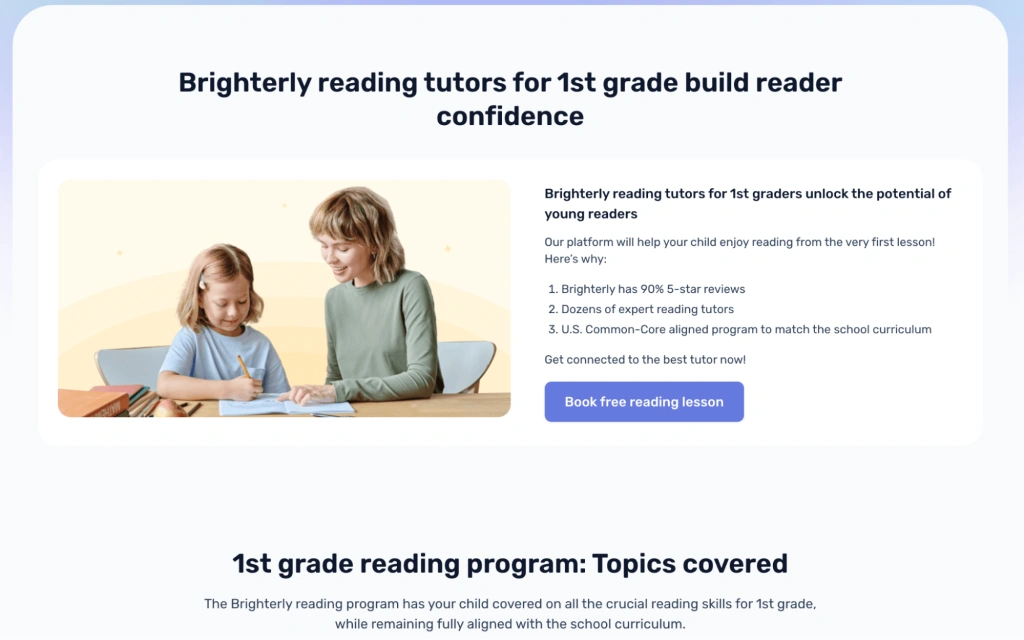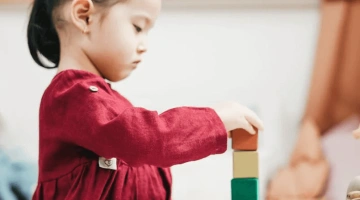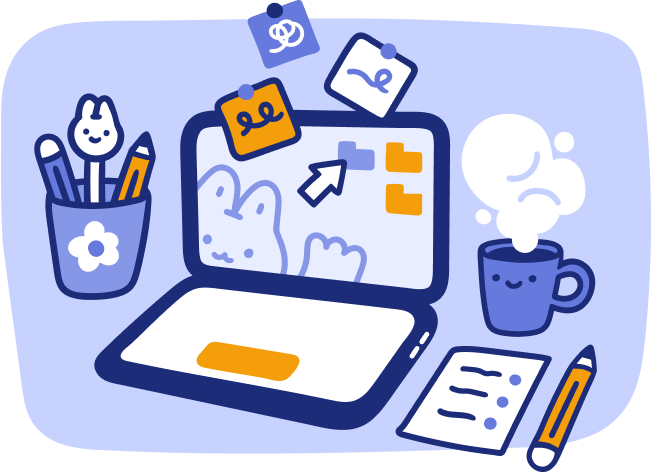Stages of Reading Development & How to Help Your Kid Tackle Each One
reviewed by Franz Jerby Delos Santos
Updated on November 13, 2025
Learning to read is not a one-off action. Reading development is a process that unfolds across five stages, during which your kid will transition from learning to recognize letters to becoming an advanced reader who can evaluate and decode texts.
In this article, I will take a closer look at the stages of reading development and how you can support your child during the development of reading skills.
Key points
- Reading development is a gradual process, during which your child will move from recognizing letters to understanding complex ideas
- The article explains what are the 5 areas of reading development (emergent, early, transitional, intermediate, and advanced) are and how each builds on the previous one
- Your child will need your guidance throughout all stages, so understanding them will help you support them with the right approach
- Addressing a specialized tutor at the Brighterly math and reading platform can be the most effective and stress-free way to help with reading, no matter your kid’s current level.
What is reading development?
Reading development is the journey the brain takes from phonemic awareness to using written materials to explore new knowledge. It’s not a single “a-ha!” moment, but a gradual process, during which your kid’s brain is developing a new “reading circuit” from scratch.
During this time, your kid starts recognizing letters, sounds, and simple words, which step-by-step grow into being able to read, comprehend, and think about what they are reading.
Note: And this is what’s important to understand: reading development is much more than just learning to read. According to the National Reading Panel, there are five foundational skills essential for the development of reading skills.
- Phonemic awareness — Phonemic awareness is more of a listening skill, as it is about hearing sounds and being able to play around with them in the spoken language.
- Phonics — This is the decoding stage, when your kid understands that the letter on the page represents the sounds they are hearing. In other words, this is the skill of connecting the sounds to letters. This stage is also known as alphabetic awareness.
- Fluency — Fluency is when you read like you’re talking, and it’s also the stage at which children start to understand the words they read, in addition to just reading them.
- Vocabulary — This one is quite simple, really. Kids cannot understand what they are reading if they don’t know what the word means. A rich vocabulary, which kids develop from talking, listening, reading, and being read to, is key to reading.
- Comprehension — Comprehension is the ultimate goal of reading. All the previous competencies, at the end of the day, serve the purpose of helping your child get the point of the text and be able to think about it.
While these competencies are milestones that develop at each of the stages of reading acquisition, you can think of reading development stages themselves as a continuum that explains how kids progress as readers.
Let’s look into the stages of reading in the next section.
5 stages of reading development
- Emergent stage of reading
- Early reading development stage
- Transitional reading stage
- Intermediate stage of literacy development
- Advanced reading stage
Emergent stage of reading
The first of five stages of reading development is the emergent stage of reading. This is a critical pre-reading stage that actually starts at birth and lasts until the age of 5 or 6. During the process of reading development at this stage, the child doesn’t read in the traditional sense of the word, but rather builds the foundational skills and understanding they need for reading to click later.
At this stage, kids learn that printed signs on books, boxes, and newspapers have a meaning. They start recognizing familiar logos, letters, some patterns, and their own names. While this may seem simple, these are the early signs that your child is developing an understanding of how language works.
The key behaviours at these early levels of reading development are:
- pretending to read using pictures as cues
- improving vocabulary through speaking and having books read to them
- starting to recognize letters
How can Brighterly help develop reading skills?
Brighterly reading program can help you and your kid at every stage of reading development, from when your kid pretends to read with visuals to when they start reading complicated texts. The clue is in the personalized and student-oriented approach they cherish at this service.
But what makes Brighterly so special? These are the three pillars of students’ success here:
- Each schedule accounts current reading stages of the specific kid but still aligns with US-accepted educational requirements, meaning your child learns exactly what’s required by their school program.
- Lessons here are interactivity-driven and gamified. In practice, it means that even the youngest learners will be involved and engaged during the whole session.
- The service features lots of free resources, you can use at all stages of learning to read for home practice. Thus, here you can find free reading worksheets for children in grades 1-9. Or, you can go for free reading tests that allow you to accurately estimate what reading stages of development you are currently on.
Best part? This service is an affordable option for practically any learner, with a minimum enrollment fee of $17.3/lesson (when one books 3+ lessons weekly).
Other ways to help kids on the emergent stage
Your child is going to need your help at each one of the reading development stages, but at this one, your role is going to be critical.
The most helpful and important thing you can do to guide your kid through the emergent stage of reading is to read aloud to them every single day. But it’s not just about books. At this stage, it’s very important that you talk to your child to build their vocabulary. You can talk about anything, from narrating your day (e.g., “I am cutting the red tomato”) to pointing out words on boxes and reading them aloud. It’s when your kid needs exposure to as many words as possible.
Note: It’s important that you include rhymes, clap out syllables, or sing songs, as this is how phonological awareness can be developed, due to the Massachusetts Department of Elementary and Secondary Education.
Make it all into a cozy, warm routine your child will love, such as making silly voices or pointing at pictures whenever possible. Together, this will set the stage for success during later phases of reading development.
Early reading development stage
The second one in my list of developmental stages of reading is the early stage. Alongside the emergent stage of reading, this is one of the stages of reading development in early childhood.
This stage takes place between the ages of 5 and 7. This is when your child will start to “crack the code” of reading, moving from pretend reading to actually trying to read the words on the page. The primary step at this stage, which is also challenging, is connecting sounds to the actual letters on the page.
At the early stage of reading development, reading is slow and takes a lot of practice, so you need to be patient. You’ll often see your kid pointing at each word as they read, reading the word letter by letter first, and they will sound far from smooth. Very quickly, however, you’ll notice how they are becoming more and more fluent, especially with more common words, as their brain starts to adapt to reading as an exercise.
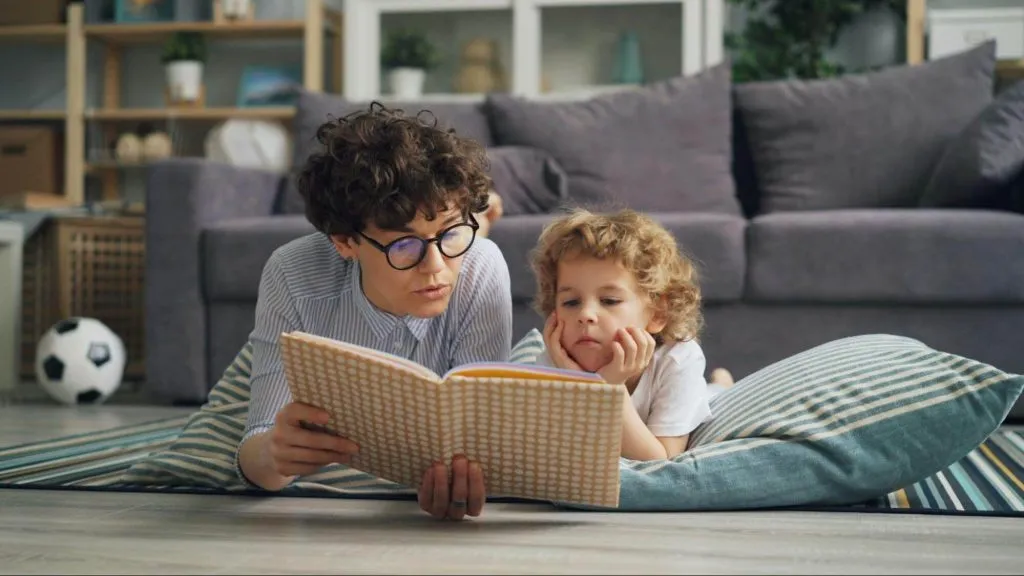
How to help kids at an early stage?
At this one of reading stages, you need to guide and support your child as they learn to read. This is an exciting, but often tiring stage, as the reading process will require a lot of practice and time. But it’s in your power to make the process much more enjoyable and effective by practicing the skills playfully. Some ways to do this are by:
- playing with letter sounds to practice phonics,
- creating flashcards with common, but tricky words to help your kid learn and remember sight words,
- using simple books with letters and words your kid already knows (or even making one yourself!).
You can also read a simple sentence yourself and then ask your kid to repeat the same sentence and try to mimic your tone. This is called echo reading, and at these levels of reading development, it’s a very effective and fun way to help them read better.
Transitional reading stage
Next up is the transitional stage of reading, an exciting time when your kid moves from slowly trying to read letters and short words to becoming more fluent. Your kid will now recognize a large number of words automatically, and will no longer need to sound out every single word. The most important change here, in addition to this semi-fluency itself, is that it will free up the mental space students use for recognizing letters, allowing them to focus on the meaning of the text. In other words, kids start to look into what the text is about, not just the mechanics of reading.
In principle, you can recognize the transitional reading stage by the shift in how your kid reads. More specifically, they will start reading in more natural phrases instead of just word-by-word, they’ll start to have more expression, and be able (and hopefully willing) to read longer texts. Lastly, at this stage, you may notice that your kid starts to read silently.
How to help kids at the transitional stage?
This stage is the perfect time to introduce them to an early chapter book series. Look for books that match their interests to hook them.
The best thing you can do at this time is to continue reading aloud to your child. Read the books out to them, or read them together, alternating the reader on each page. Or, if the book has dialogues, assign roles. These books will introduce them to new vocabulary, a more complex one than they are used to reading, which is critical for reading skill development. The most important thing is to keep them interested, so reading is associated with fun.
Intermediate stage of literacy development
At this level, an important shift happens. Before, your child was learning to read. At the intermediate stage, they will switch to reading to learn. Reading will no longer be the goal in itself, but rather it will become a tool for acquiring new knowledge.
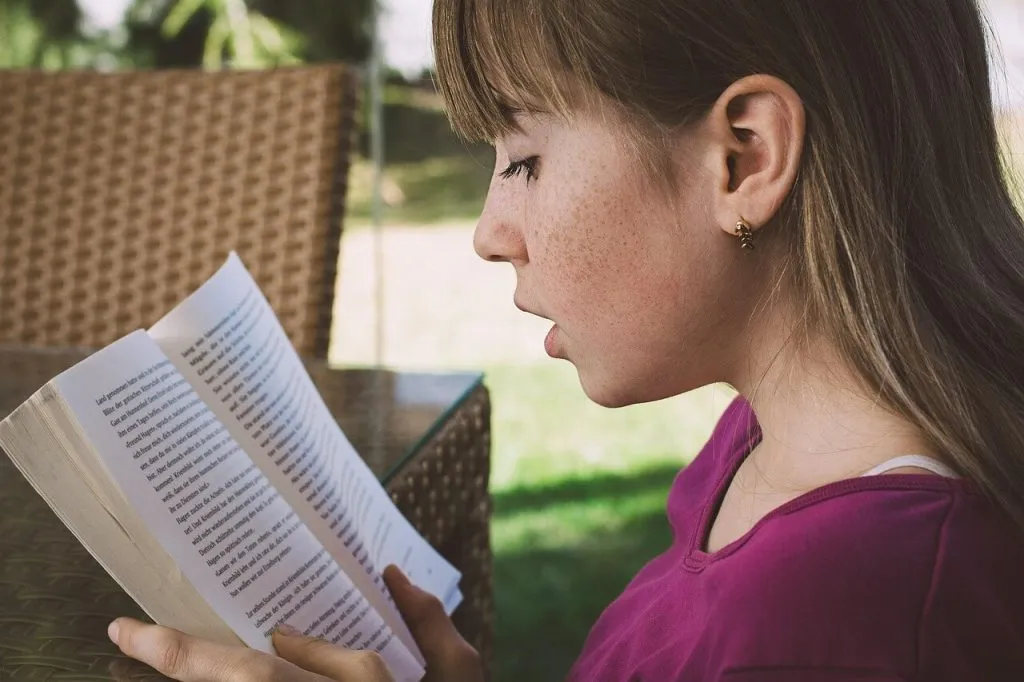
At this stage, you can expect your kid to be a fluent and automatic reader. The intermediate stage of literacy development is all about making sense of explanatory and complex texts, like novels, which have multiple themes, or guides and textbooks.
How to help kids at the intermediate stage?
Your kid is now an independent reader, it’s true, but your support is still vital for them. At the intermediate reading stage, you should encourage them to read more, explore various genres, different authors, as well as magazines and news articles that match their interests and hobbies.
Read the same book your kid is reading to discuss it with them; build your own small book club. Above all else, this will help them think of reading as a social and fun activity, not something they will be graded on.
Advanced reading stage
The last one of the 5 stages of reading development is the advanced stage. This is when your child becomes an expert reader. The focus shifts from simply understanding the texts to being able to critically analyze and evaluate texts and to make sense of even more complex material like scientific or philosophical texts.
At the advanced stage, reading is a tool for deep thinking. Your kid should be able to read, understand, and evaluate different types of material on the same topic, even if the ideas contradict each other. This is the reading stage, when your kid will start using reading to form a worldview.
How to help kids at the advanced stage?
At this stage, naturally, your position as the supporter will change. Previously, you had to instruct and guide your kid; now it’s more about engaging with them. Discuss what they are reading, read alongside if you have the time, or if you don’t, ask them to tell you about the ideas they found interesting, and why. These discussions will turn reading into an active thinking process.
It’s when the stages of reading development chart is completed for you and you have a clear view of what are the stages of reading development.
What are the 5 areas of reading development?
The 5 areas of reading development are phonemic awareness, phonics, vocabulary, fluency, and comprehension. Each area has its own milestones, from understanding that letters have meaning to analyzing complex texts. As your kid masters each area, they will need support and guidance.
Note: Children, whose parents read to them at home, are likely to pick up reading skills more easily at school.
What’s the difference between a beginning reader vs emergent reader?
The main difference between a beginning reader vs emergent reader is that the emergent reader is just starting to understand that printed words have a meaning, while a beginner reader can already read simple words, short sentences, and start understanding basic stories.
Conclusion
If you dove into this article with the question “What are the 5 stages of reading development?”, I hope you found all the information you were looking for. Each stage plays a critical role as your child grows into a fluent and confident reader. By knowing what to expect at every step, you are better equipped to support them and provide the materials, guidance, attention, and support they need to master this vital skill and become lifelong readers.
If you are looking to help your child build a strong reading foundation through engaging lessons, the Brighterly math and reading platform is a great choice. Through personalized lesson plans, age-appropriate materials, and interactive games, the tutors will guide your kid through each stage of reading development with care and attention. Book free reading lesson and see how things work here.


